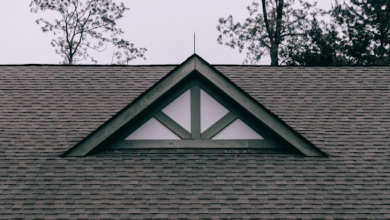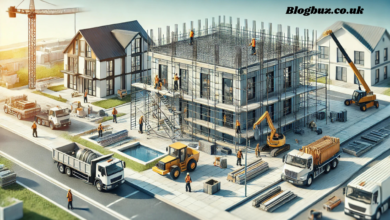What Homeowners Get Wrong About Demolition (And How to Do It Right)

Q: Is demolition really as simple as grabbing a sledgehammer and going to town?
A: Not even close. That’s one of the biggest misconceptions out there. Many homeowners think demolition is the “easy” part of a renovation—the part where you just break things down before the real work begins. But proper demolition, especially light demolition, is a process that requires planning, strategy, and expertise. Go in without that, and you could find yourself with more damage (and more expenses) than you ever expected.
Q: What exactly is light demolition, anyway? How is it different from full demolition?
A: Great question. Light demolition is all about selective removal. Instead of taking down an entire structure, it focuses on specific elements—like a wall, built-in shelving, flooring, or a bathroom vanity. It’s controlled, precise, and used most often in remodeling, not reconstruction. Full demolition, by contrast, is typically complete structural teardown.
When working with a demolition contractor who specializes in light demolition, you’re getting someone who understands how to preserve what should stay while removing only what no longer serves the space.
Q: So why do homeowners often get demolition wrong?
A: There are three common traps:
- Underestimating what’s behind the wall – That “simple” wall could contain wiring, plumbing, or even structural support.
- Skipping the permits – Even small demolition jobs may require local approval. Forgetting this step can cause legal issues.
- Thinking it’s a DIY job – Sure, swinging a hammer can be fun—but once you hit something you didn’t expect (like a live wire), the fun ends quickly.
Most errors come from lack of preparation or trying to save money by avoiding professional help, which ironically leads to spending more in the end.
Q: Is it true that demolition can increase costs if not done properly?
A: Absolutely. Poor demolition can lead to broken plumbing, electrical issues, compromised support structures, and debris that’s costly to clean up. Even if you’re doing a small remodel, bad demolition work can unravel your timeline and budget fast.
This is why hiring a demolition contractor early in the planning phase makes such a big difference. Not only can they advise on what can be safely removed, but they also help flag potential complications before they become actual problems.
Q: How does light demolition actually add value to a renovation?
A: It’s all about intention. Let’s say you’re remodeling your kitchen. Instead of gutting everything, you remove a non-load-bearing wall, open up a breakfast nook, and create more visual space—all without expanding the square footage. That’s the power of smart, targeted demolition.
Buyers and renters respond to layouts that feel open, bright, and flexible. Light demolition enables that, which in turn increases property value. The best part? You don’t need to rebuild from scratch to see those results.
Q: What about safety? Is that something homeowners overlook?
A: Constantly. Demolition sites are full of hidden risks—dust, nails, mold, asbestos, old wiring. It’s not just a matter of swinging carefully. You need protective equipment, proper containment, and a clean disposal plan. That’s not always something the average DIYer has on hand—or even thinks about.
One of the roles of a professional demolition contractor is to maintain a safe environment throughout the process. That includes knowing how to remove materials without creating health hazards and managing debris efficiently.
Q: How should someone prepare their space for a demolition project?
A: Preparation is half the battle. Before demolition even begins, you should:
- Clear the area of furniture and valuables
- Shut off utilities to the demo zone
- Identify load-bearing structures with a contractor
- Secure dust barriers to protect adjacent spaces
- Line up proper waste containers for debris removal
A good contractor can guide you through all of these steps and ensure nothing gets missed.
Q: Do all contractors offer light demolition services, or is it a specialized skill?
A: Not all contractors are created equal in this department. Light demolition requires precision and an understanding of how to work around active systems—like plumbing, HVAC, and electrical. It’s not about destruction—it’s about deconstruction.
That’s why working with professionals who focus on demolition specifically, like Dump Brothers, makes a difference. They bring in-depth knowledge, the right tools, and a process designed to minimize disruption while maximizing impact.
Q: What’s one thing people should never assume when starting demolition?
A: Never assume that what you can’t see isn’t important. Behind every wall, under every floor, there could be something that changes the entire scope of the project. One pipe or wire in the wrong place can mean rerouting everything and delaying your timeline by weeks.
This is why consulting a demolition contractor during the planning stage is such a smart move. They can help you identify hidden risks, price the job accurately, and avoid the kinds of surprises that blow up budgets.
Q: Any final tips for first-timers tackling demolition?
A: Yes—slow down. Demolition isn’t the throwaway task many people think it is. It’s the start of everything that follows, and if it’s done poorly, it makes every next step harder.
Respect the process. Work with pros. And remember that thoughtful removal is just as important as thoughtful design. Done right, demolition clears the way for something better—not just literally, but financially, structurally, and emotionally.
Dump Brothers has worked with countless property owners who were surprised at just how transformative a well-executed demolition project could be. Whether it’s a full remodel or a single wall coming down, the impact of that decision lasts far beyond the moment the debris is cleared.
So next time you’re planning a change, don’t treat demolition as a side note. Treat it like the foundation of the transformation to come—and do it the right way from the start.




